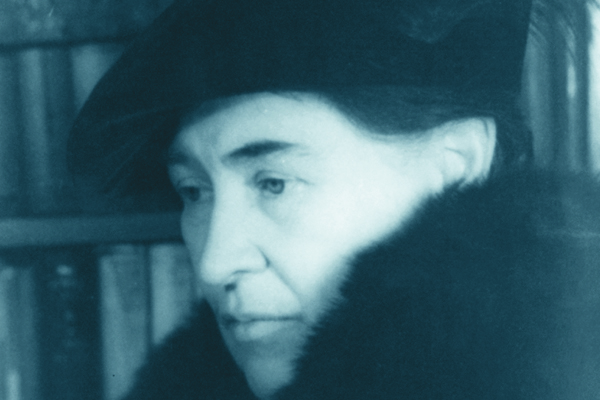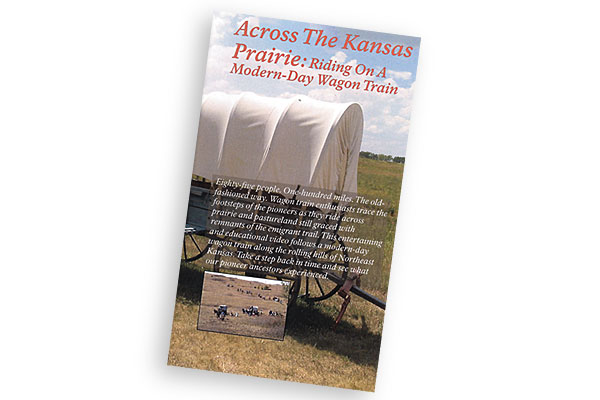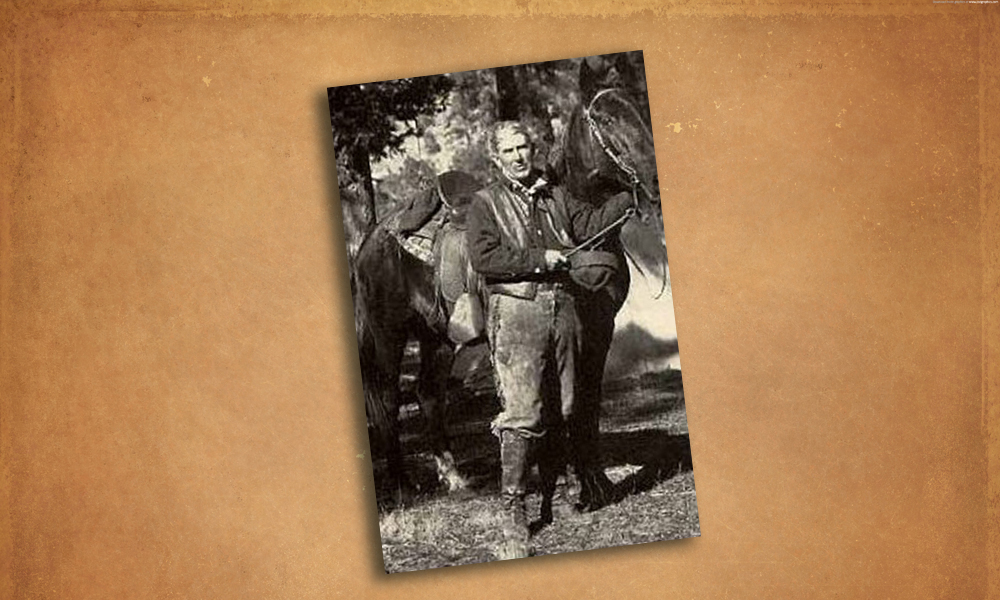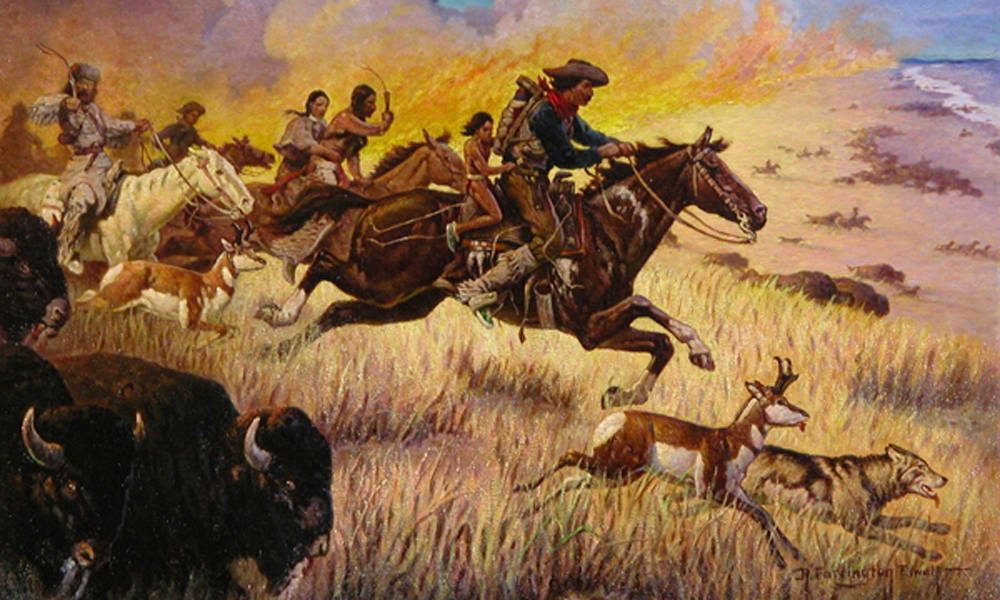 Her writing is so vivid, you can see the yellow jam made from the ground cherries that grew prolifically on the prairie; you can almost hear the rustling of the red grasslands that once stretched forever across Nebraska.
Her writing is so vivid, you can see the yellow jam made from the ground cherries that grew prolifically on the prairie; you can almost hear the rustling of the red grasslands that once stretched forever across Nebraska.
On the pages of Willa Cather’s novels, we first learn that she and her neighbors never went to their gardens without their “rattlesnake canes,” and they were always careful to aim the canes at those killers and not at the harmless yellow and brown bull snakes that kept the gophers down.
Willa chronicled the American West and its pioneers—from Eastern transplants to immigrants. Her writing brought their experiences into the conscience of America and propelled her into the ranks as one of America’s greatest novelists.
“Willa Cather was the first writer able to portray Westering as a significant and universal human experience,” writes Dorothy Gray in Women of the West. “She was the first to use Western people as major fictional characters…. Suddenly, not only had the West found a literary voice but American writing had become authentically American.”
Although born in Virginia on December 7, 1873, Willa moved with her family to a Nebraska farm when she was 10 and soon after, to the small town of Red Cloud. Her neighbors were immigrants: German, Swedes, Czechs, Russians, Scottish-Irish. All these people—their lives, hardships and dreams—would eventually be explored in novels such as 1913’s O Pioneers! and 1918’s My Antonia.
“At first, Cather missed the mountains and trees of Virginia, but as she rode her pony across the miles of tall prairie grass, she came to understand and love this new land,” writes Judy Alter in Extraordinary Women of the American West.
Willa was never a conventional girl: she cut off her curls, dressed like a boy and declared she wanted to be a doctor, tagging along with the doctor in Red Cloud as he made his rounds. Her family valued education, and she was first taught at home by her grandmother, who had declared the local country school inferior. Then Willa attended Red Cloud High School, where her “eccentric” behavior included dissecting animals. She found small town life and the prairie too constricting.
In 1895, she became one of the few women of her time to earn a college degree, graduating from the University of Nebraska in Lincoln. She helped pay her way through school by writing for the Nebraska Journal. After graduation, she took a job writing for a Pittsburgh magazine. Five years later, she began teaching high school English, during which she published her first poetry and collection of short stories.
The talent shown in her short stories attracted the attention of the editor of McClure’s magazine, then one of the most important publications in the nation. He lured her to New York and in 1906, she moved to the literary capital as a McClure’s editor. In 1912, she began publishing novels, eventually penning 12. Several of them had a common theme of heroic womanhood in the face of great hardship.
Her novel One of Ours (the story of a Western boy in WWI) won a Pulitzer Prize in 1922, while in 1933, she won the Prix Femina American in France for “distinguished literary accomplishments.” She was the first woman granted an honorary degree from Princeton University and also had honorary degrees from seven other colleges. She was the first woman voted into Nebraska’s Hall of Fame. She’s also been inducted into the Hall of Great Westerners in Oklahoma City; the National Women’s Hall of Fame in Seneca, New York; and the National Cowgirl Hall of Fame in Fort Worth, Texas.
Although some debate the issue, it seems clear that Willa was a lesbian. She lived with Edith Lewis in New York City for 40 years. She liked to dress in black, mannish clothes and had been a tomboy since childhood. During her lifetime, she never publicly acknowledged her homosexuality, insisting that her private life remain just that. (She reportedly destroyed most of her papers before her death and left a will forbidding publication of her letters.)
As she aged, Willa became increasingly distressed with the world around her, finding it too materialistic and spiritually decaying. After she joined the Episcopal Church in 1922, her writing took a new turn. Death Comes for the Archbishop, arguably her most famous novel, was published in 1926. It is set in the American Southwest, where nature and Christianity are opposed to modern urban life.
She saw one of her novels made into a movie—twice. A Lost Lady was first a silent film starring Irene Rich in 1925 (it premiered in Red Cloud) and then was remade in 1934 starring Barbara Stanwyck.
Willa left her mark on literature and, especially, women in literature. “Willa Cather was the first to create in her women characters of substance, capable of carrying the action of her story,” Gray notes. “Until her novels, women in American literature had almost uniformly been creatures of romance, their dimensions limited by the literary conventions of gentility and sentimentality. Those few women placed in a Western setting in books were the weak sisters and sweethearts in a world of strong Leatherstocking types who were always on hand to rescue the poor creatures. It was also virtually a rule that if a woman was a major character in a novel she was only as part of a love story.”
Comparatively, Willa’s women were “not the darlings of heroes but heroes themselves,” as one critic put it.
Willa died on April 24, 1947, in her New York City home. She wasn’t buried in Nebraska but in New Hampshire, where she’d often visited during her lifetime.
The World Book remembers her as “one of America’s finest novelists,” noting, “She expressed a deep love of the land and a strong distaste for the materialism and conformism she saw in modern life. She showed a genuine devotion to traditional values and the importance of family.”
Her obituary in the Pittsburgh Sun-Telegram stated, “She was an artist in telling a story simply.”
Today, the Willa Cather Pioneer Memorial and Educational Foundation in Red Cloud is preserving her childhood home, her writings and her legacy. Established in 1955, the foundation has saved seven 1880s’ buildings associated with her life and offers a “country tour” that takes visitors to sites made famous by Willa’s novels.
For a decade, Red Cloud has hosted an international seminar on writing. The town also sponsors an annual writing competition in Willa’s name for junior and senior high school students, and each April, it hosts the Willa Cather Spring Festival.
This year, Nebraska’s “One Book-One State” program—encouraging readers to focus on the same book and share their reactions in book clubs around the state—read My Antonia.
While Willa would undoubtedly have been pleased that her work continues to inspire new writers, Nebraska has also given her an honor that seems most appropriate. In 1974, the Nature Conservancy purchased 210 acres of native grassland south of Red Cloud, now known as the Willa Cather Memorial Prairie.






